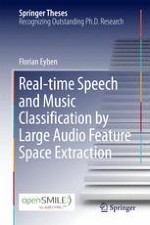2016 | Buch
Über dieses Buch
This book reports on an outstanding thesis that has significantly advanced the state-of-the-art in the automated analysis and classification of speech and music. It defines several standard acoustic parameter sets and describes their implementation in a novel, open-source, audio analysis framework called openSMILE, which has been accepted and intensively used worldwide. The book offers extensive descriptions of key methods for the automatic classification of speech and music signals in real-life conditions and reports on the evaluation of the framework developed and the acoustic parameter sets that were selected. It is not only intended as a manual for openSMILE users, but also and primarily as a guide and source of inspiration for students and scientists involved in the design of speech and music analysis methods that can robustly handle real-life conditions.
Anzeige
